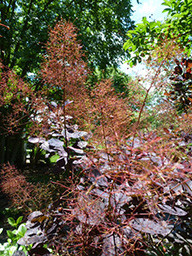
Plants of the Week: September 11
Cryptomeria japonica ‘Black Dragon’
Though commonly called Japanese cedar, Cryptomeria japonica was designated by Scottish botanist David Don in the early 1800s as being more closely related to other members of the Cypress Family Cupressaceae rather than to true cedars, which are in the pine family Pinacea,.
Evergreen and cone-bearing, this Japanese native conifer can grow in a variety of conditions from full sun to partial shade. The slow-growing cultivar ‘Black Dragon’ was selected and propagated for its dark foliage; it has bright green new shoots that mature to a deep blackish-green. A ten-year-old specimen can be found outside the Martin Greenhouse in the Winter Garden. Photo credit: J. Bickel
Nandina domestica [Obsession™] ‘Seika’
Botanically speaking, heavenly bamboo is not related to true bamboo at all. Nandina is actually more like the invasive barberry Berberis thunbergii from the family Berberidaceae than any real bamboo species (which would be in the grass family, Poaceae.) A woody evergreen shrub, Nandina domestica grows in spreading clumps by means of underground lateral stems. It produces bright red new growth that matures to deep green.
If planted in groups, plants are likely to produce clusters of bright red, holly-like berries. The Obsession™ series was selected as a superior dwarf variety that grows to a maximum of 2’-3’ tall. A healthy and well-established clump can be found in the Harry Wood Garden. This plant is available at the 2017 Scott Arboretum Selections: Fall Sale this weekend. Photo credit: J. Bickel
Ceratostigma plumbaginoides
Ceratostigma plumbaginoides may have received its common name, leadwort, due to the “lead-blue” color of its flowers, or due to the historical belief that the plant could be used as a cure for lead poisoning. Although there is no current scientific evidence to support this poisoning connetion, references to lead linger in the species scientific name as well: plumbum means “lead” in Latin.
An herbaceous perennial groundcover, C. plumbaginoides is a reliable standby that creates dense clumps, which become dappled with small, delicate, gentian-blue flowers with blood-red calyces. Ceratostigma generally prefers well-drained areas, and full sun to part shade. Well-established stands of this plant can be found in the Entrance Garden outside the Scott Arboretum Offices at the Cunningham House, and in the Pollinator Garden on the north side of campus. This plant is available at the 2017 Scott Arboretum Selections: Fall Sale this weekend. Photo credit: J. Coceano
Styrax obassia
Styrax obassia is a sometimes-overlooked tree in the landscape trade. Its leaves are a unique, broadly-rounded shape with a pointed tip, often showing marginal protuberances. The flowers are sweetly fragrant, pendulous, and clear white, with bright yellow reproductive parts, similar to the silverbell tree Halesia tetraptera, which is in the same family, Styracaceae. Once fertilized, the flowers mature to lightly fuzzy, spherical, pendulous seed pods that hang in profusion on the entire tree.
Once fully mature, the pods produce small, shiny, black seeds. A slightly hidden specimen can be found growing at the edge of the Cherry Border near the sidewalk on Cedar Lane. This plant is available at the 2017 Scott Arboretum Selections: Fall Sale this weekend. Photo credit: D. Mattis
Salvia glabrescens ‘Shi Ho’
I can only think of a few species of Salvia that are truly hardy in this area. The Japanese woodland sage Salvia glabrescens ‘Shi Ho’ is one of the more interesting and unusual ones. The leaves are arrowhead shaped, with sharp and irregular dentate margins. Being a member of the mint family Lamiaceae, S. glabrescens is a perennial forb with glabrescent (hairless) square stems and oppositely-arranged leaves.
The cultivated variety ‘Shi Ho’ was selected for its exceptionally purple flowers in comparison to the species’ normal blush pink. This cultivar can be found in a dense planting at the entrance to the Pollinator Garden. This plant is available at the 2017 Scott Arboretum Selections: Fall Sale this weekend. photo credit: J. Bickel





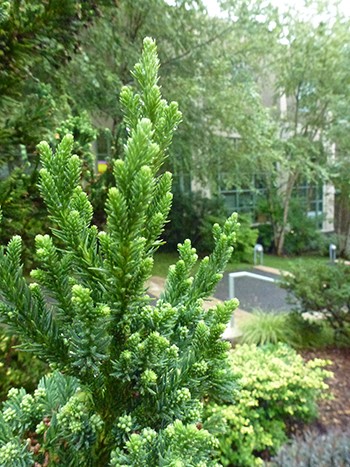
![Nandina domestica [Obsession] 'Seika' JTB (2)](https://www.scottarboretum.org/wp-content/uploads/2017/09/Nandina-domestica-Obsession-Seika-JTB-2-400x300.jpg)
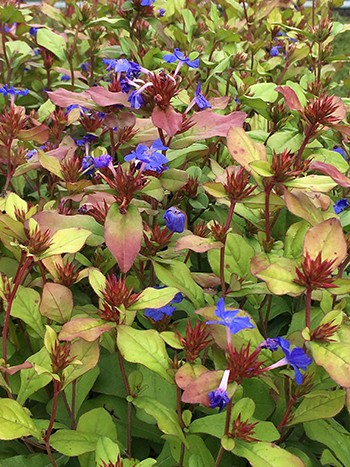
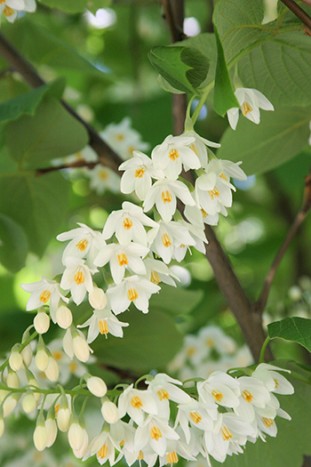
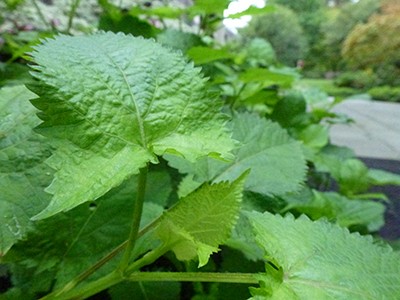
No Comments